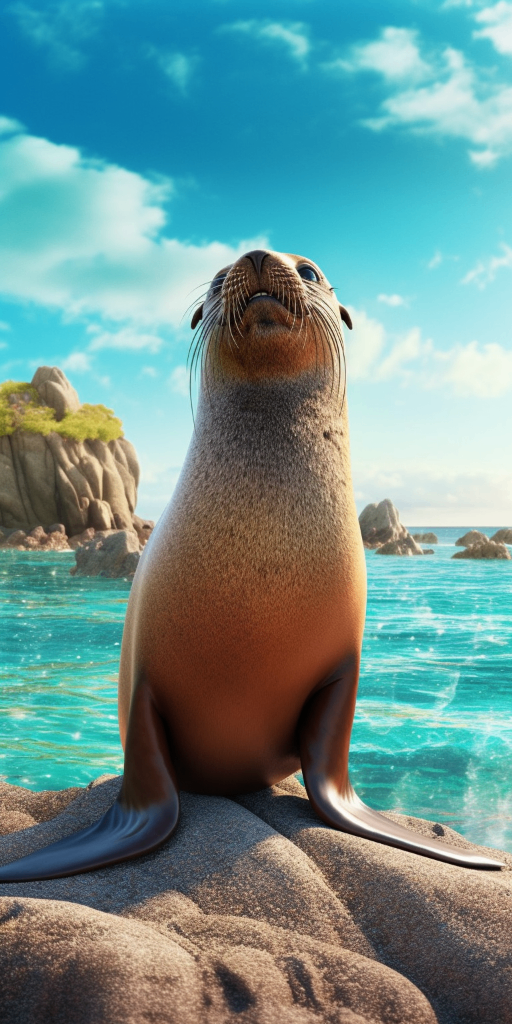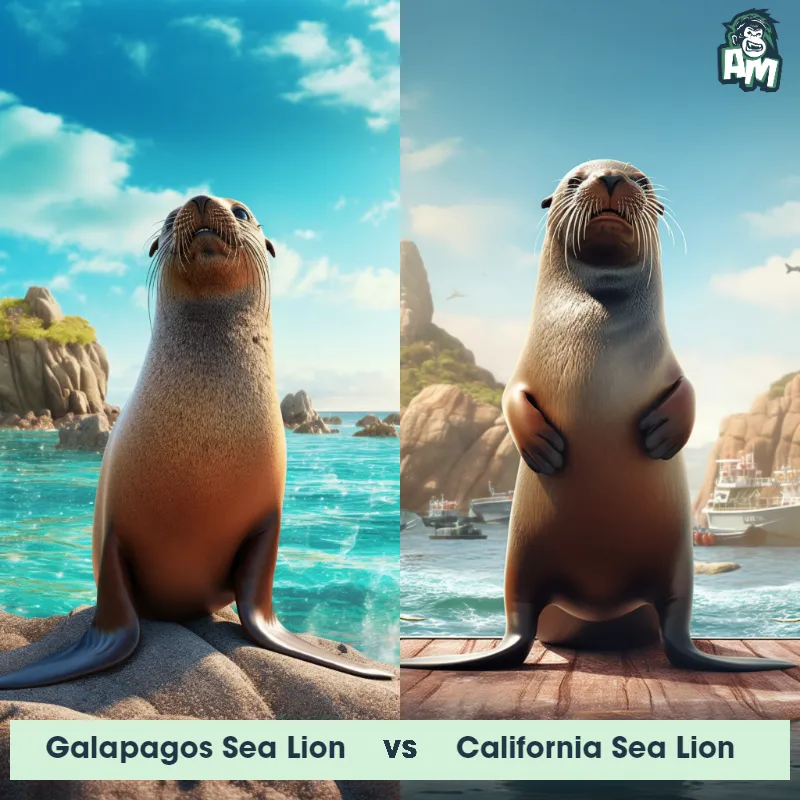The Galapagos Sea Lion
The Galapagos Sea Lion Zalophus wollebaeki is a marine mammal endemic to the Galapagos Islands. They are known for their social nature and playful behavior. They have a sleek and streamlined body, with males growing larger than females. These sea lions have a dark brown to grayish color and exhibit sexual dimorphism, with males having a well-developed sagittal crest on their heads. They possess strong flippers and are excellent swimmers, using their hind flippers to move on land.

| Galapagos Sea Lion | |
|---|---|
| Size | Males: up to 6 feet (1.8 meters), Females: up to 5 feet (1.5 meters) |
| Weight | Males: up to 550 pounds (250 kilograms), Females: around 200 pounds (90 kilograms) |
| Speed | Speed: 25 mph (40 km/hr) |
| Key Strength | Powerful jaws and sharp teeth |
| Biggest Weakness | Vulnerable to attacks on land |
| Scientific Name | Zalophus wollebaeki |
| Family | Otariidae |
| Habitat | Coastal areas, rocky shores, and beaches |
| Geography | Galapagos Islands |
| Diet | Fish, squid, octopus |
| Lifespan | 20 years - 30 years |

The Galapagos Sea Lion
The Galapagos Sea Lion Zalophus wollebaeki is a marine mammal endemic to the Galapagos Islands. They are known for their social nature and playful behavior. They have a sleek and streamlined body, with males growing larger than females. These sea lions have a dark brown to grayish color and exhibit sexual dimorphism, with males having a well-developed sagittal crest on their heads. They possess strong flippers and are excellent swimmers, using their hind flippers to move on land.
Fun Fact: Galapagos Sea Lions are considered the smallest and most threatened species of sea lions in the world.
| Galapagos Sea Lion | |
|---|---|
| Size | Males: up to 6 feet (1.8 meters), Females: up to 5 feet (1.5 meters) |
| Weight | Males: up to 550 pounds (250 kilograms), Females: around 200 pounds (90 kilograms) |
| Speed | Speed: 25 mph (40 km/hr) |
| Key Strength | Powerful jaws and sharp teeth |
| Biggest Weakness | Vulnerable to attacks on land |
| Scientific Name | Zalophus wollebaeki |
| Family | Otariidae |
| Habitat | Coastal areas, rocky shores, and beaches |
| Geography | Galapagos Islands |
| Diet | Fish, squid, octopus |
| Lifespan | 20 years - 30 years |
Galapagos Sea Lion Matchups
We use AI to simulate matchups between the Galapagos Sea Lion and other animals. Our simulation considers size, strength, and natural predatory behaviors to determine the most likely outcome.
Galapagos Sea Lion: Diet, Predators, Aggression, and Defensive Behaviors
What do Galapagos Sea Lions eat?
Galapagos Sea Lions primarily feed on fish such as sardines, herring, and mullet. They also consume squid and octopus. Their diet consists mainly of small to medium-sized prey found in the waters surrounding the Galapagos Islands.
Do Galapagos Sea Lions have any predators?
Adult Galapagos Sea Lions do not have many natural predators due to their large size and agility in the water. However, large sharks such as Great White Sharks and Tiger Sharks may pose a threat to sea lions, especially juveniles or weaker individuals.
Are Galapagos Sea Lions aggressive?
Galapagos Sea Lions are generally not aggressive towards humans or other animals unless they feel threatened. They may become protective of their territory or pups, and may display aggressive behavior towards intruders during mating season.
Do Galapagos Sea Lions fight each other?
Male Galapagos Sea Lions may engage in physical fights to establish dominance or defend their territory. These fights can be intense, with loud vocalizations and displays of strength such as biting, pushing, and head-butting.
How do Galapagos Sea Lions defend themselves?
Galapagos Sea Lions use their agility in the water to evade potential threats. They can swim quickly and perform acrobatic maneuvers to escape predators. Additionally, they may vocalize loudly or show aggressive behavior to deter threats and protect themselves.
What is the biggest weakness of Galapagos Sea Lions in a fight?
Despite their speed and agility in the water, Galapagos Sea Lions may be vulnerable on land. Their proficiency in swimming may not be as effective on solid ground, making them more susceptible to attacks from predators or rivals in terrestrial confrontations.
Fun Fact: Unlike other sea lions, the Galapagos Sea Lions can survive in warmer waters, as they have adapted to the tropical temperatures of the Galapagos Islands.
Fun Fact: During breeding season, male Galapagos Sea Lions establish territories on the shoreline and engage in territorial displays to attract mates.














